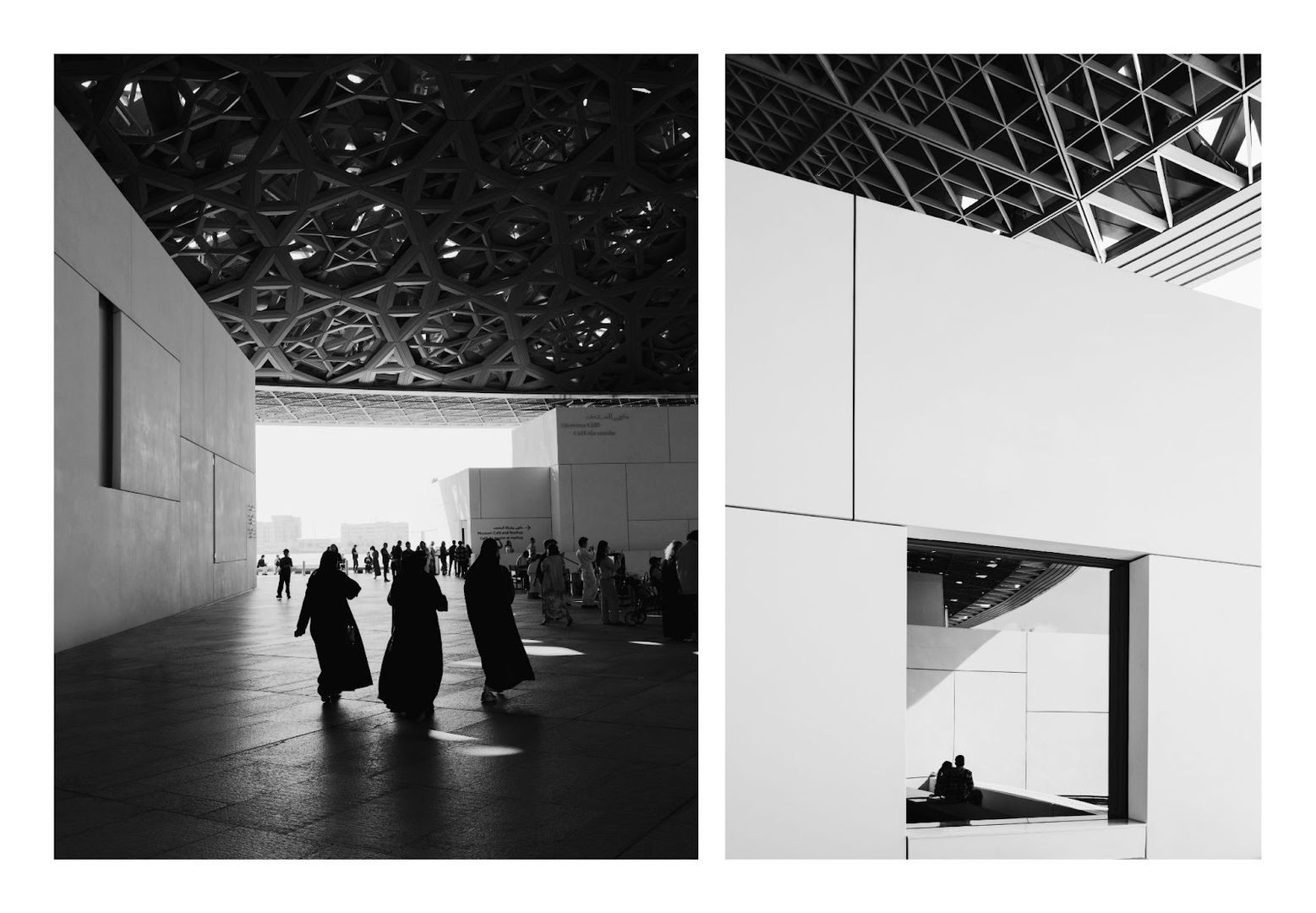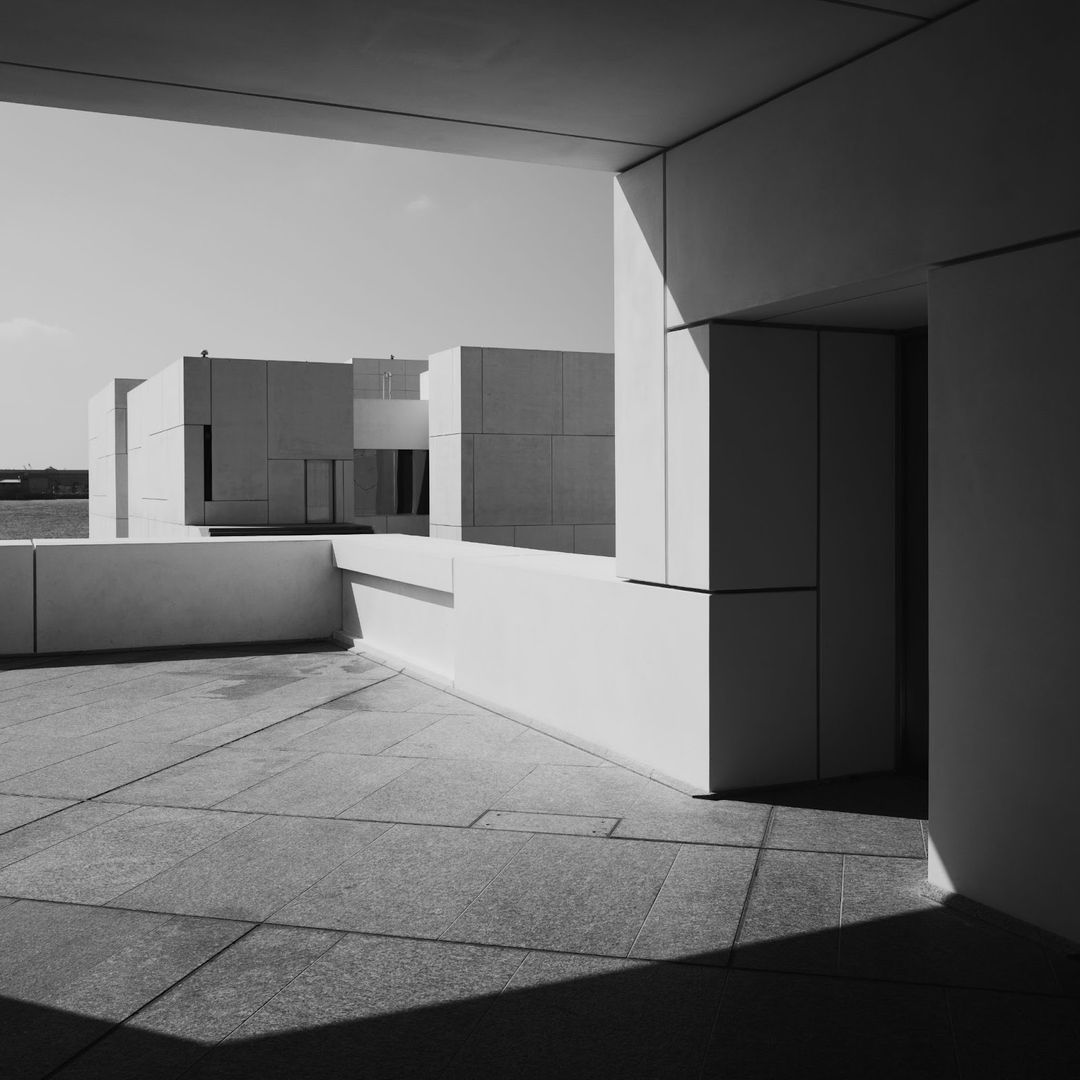2025-11-21
Max Balderas
Design Dispatch, New York

I’m standing under a dome, shielding an extensive selection of art from the Emirati heat, composed of a multitude of geometric shapes akin to constellations. As the light pierces through its unpredictable perforations I acknowledge that Jean Nouvel, with sleekness and poise, has designed his magnum opus.
Modern architecture – consciously or not – has always been my primary source of inspiration. My love for compositing with light and lines is very evident, from my adolescence to present day. In my earliest days as a photography-curious teenager, with an iPhone 5 as my only source of documentation, I looked for architectural lines and made them look infinite. As much as architecture fulfilled me, I did not feel a strong calling to pursue the profession. I was struck by a different force. An artistic enlightenment. Photography. Which makes even more sense when appreciating I come from a lineage - my grandfather, mother, and older sister - who have made their career visual documentation. And when people around you are passionate about what they do, it’s contagious.
My trained eye for geometrical and well balanced frames never left my perspective. Even as I centered on portraiture at university, I was constantly seeking architectural framing. Gradually, I found myself shifting the focus away from the human, and centered around architecture itself. During my sophomore semester at FIT (The Fashion Institute of Technology) I wanted to create a project that translated the feeling of human presence in architecture. Coming across various distinguished structures by Louis Kahn, Renzo Piano, and Frank Gehry, I sought a provocative feeling. It came naturally the day I came across – in an ideal circumstance – a soulshifting work of art. On a nebulous day, I stopped in front of 53 West 53 by French architect Jean Nouvel. I had walked by this building numerous times but this time, the lines became infinite, fading in the low clouds. I was thirteen again. My inspiration was reborn. The building, located in a saturated Midtown skyline, sharpened my visual trajectory moving forward. I realized my work felt true and vulnerable when I anthropomorphized space and structures. Nouvel’s style welcomed this idea.

Image credit: Max Balderas
From the Louvre Abu Dhabi’s to the biomimetic design of the National Museum of Qatar, my appreciation of Nouvel’s sophisticatedly extraterrestrial designs with explicit geometrical presence grew. When framing these elements I understand the structure's personality and my relation to them. What I find beautiful in the design parallels what I find beautiful in my life. An innocent but important reminder. Alain de Botton said it best in his book The Architecture of Happiness, “some of the qualities we like in architecture are qualities we might already have. The Louvre Abu Dhabi epitomized the architect’s intentional use of light in constructing an experience that changes throughout the day. In a region known for colossal architecture accomplishments, Nouvel didn’t only push boundaries, he set a new standard. I felt a creative responsibility in leading a personal collaboration between me, Nouvel, and light. Approaching his architecture as a form of self portrait is my way of venerating Nouvel’s design.

Image credit: Max Balderas
Architecture has taught me there is an abundance of beauty in what I photograph. Nouvel’s cosmical creations made me dive into this simple but personally unexplored belief: to create with intention and to simply let my artistic instinct guide me. In doing so, my work becomes distinctive. As historians Ernst Kris and Ernst Gombrich describe in their theory of the beholder’s share, the meaning of a work of art is completed with the viewer's contribution. Architecture, just like an expressionist painting, relies on our perception. I now approach every space with curiosity, knowing the meaning will come naturally and there is no need to pursue happiness. My admiration for Nouvel's work fueled the idea that I must be proud of my individuality, ground my practice in my unique history, and explore the empathetic expression of architecture.